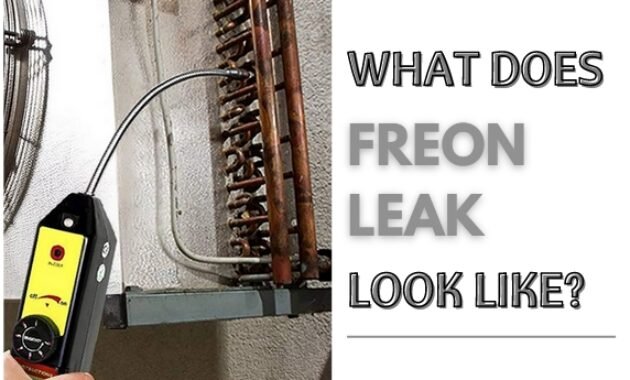As an HVAC technician with extensive experience and certifications in the field, I have encountered numerous cases of refrigerant leaks. Understanding what a freon leak looks like and knowing the signs to watch for can help you take swift action to mitigate damage and ensure the safety and efficiency of your AC unit.
Importance of Refrigerant
Refrigerant, commonly known as freon or coolant, is a crucial component of your AC unit. It absorbs heat from indoors and expels it outdoors, allowing your system to cool your home effectively. When there is a refrigerant leak, your AC’s performance diminishes, leading to higher energy bills and potential health risks.

What Is a Freon Leak?
A freon leak occurs when the refrigerant escapes from the AC unit. This can happen due to wear and tear, corrosion, or damage to the refrigerant lines. Understanding the signs of a leak can help you address the issue promptly and prevent further complications.
Signs of a Freon Leak
Identifying a freon leak early can prevent further damage to your AC unit and protect your health. Here are common signs that your AC might be leaking freon:
Sure! Here is a table based on the signs of a freon leak from the article:
| Signs of a Freon Leak | Description |
|---|---|
| Warm Air Production | The AC blows warm air instead of cool air. |
| No Air from Vents | In some cases, no air comes from the vents. |
| Increased Energy Bills | Unexpected spikes in energy bills due to the AC working harder. |
| Strange Noises | Gurgling or hissing sounds from the unit indicate a possible leak. |
| Quiet Operation | The unit operates quietly without the typical cooling sounds. |
| Environmental Impact | Freon is a potent greenhouse gas contributing to global warming. |
| Health Risks | Exposure to freon can cause symptoms ranging from mild (coughing, headache) to severe (coma, death). |
| Damage to the AC Unit | Insufficient refrigerant strains the AC components, shortening its lifespan. |
What Color Is Freon When It Leaks?
Freon is odorless, tasteless, and colorless, making it difficult to detect. However, leaks can be identified more easily with the use of dye. You can mix some lubricants and dye and circulate them throughout the system.
Detecting a Freon Leak
- Dye Method: AC technicians often use a dye mixed with lubricants, which is circulated through the system. If there is a leak, the dye will appear yellow-green.
- UV Lamp: You can use a UV lamp or blue light to scan the system and spot the leak highlighted by the dye.
In the event of a leak, you should be able to see a yellow-green color (from the dye). No need to worry, you should be able to spot it as it’s quite bright. You can also scan the system using a UV lamp or blue light. That’s how you can find the leak.
Professional Help
If you suspect a freon leak and are unsure of what to do, it is best to contact a professional AC technician. They have the tools and expertise to detect and repair leaks safely and effectively. Contact a professional AC expert and let them do everything: the check, the repair, and the re-check. Don’t do it alone when you don’t have experience with this matter.
Conclusion
Recognizing the signs of a freon leak and understanding its implications is crucial for maintaining a healthy and efficient AC system. If you suspect a leak, consult a professional to prevent further damage and protect your health and the environment.


